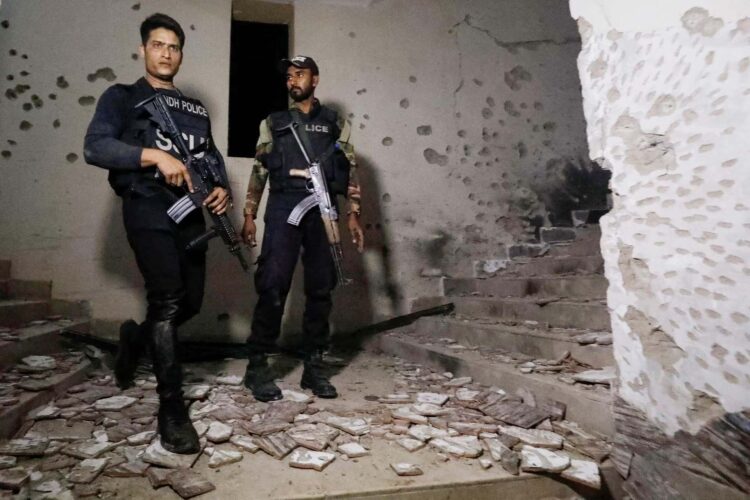KARACHI/ISLAMABAD: In a significant counterterrorism operation, three suspected militants affiliated with the banned Tehreek-e-Taliban Pakistan (TTP) were killed in an early morning police raid in Karachi’s Manghopir area on Monday. The operation, carried out by the Counter Terrorism Department (CTD), comes amid a broader national uptick in militant violence, particularly in Balochistan and Khyber Pakhtunkhwa (KP), raising fresh concerns about internal security.
CTD officials launched the raid after receiving intelligence that members of the TTP’s Fitna Al-Khawarij faction were hiding in a house in Manghopir. As officers surrounded the premises, the suspects opened fire, triggering a gun battle that ended with the deaths of all three men.
Speaking to the media outside Civil Hospital, CTD Deputy Superintendent Raja Umar Khattab identified two of the deceased as Zafran — who had a government bounty of Rs20 million on his head — and Qudratullah. The third militant remains unidentified. According to CTD sources, one of the killed militants was a suicide bomber suspected of involvement in last year’s attack targeting Chinese nationals in Karachi, highlighting the growing threat to foreign interests in the country.
The raid also led to the recovery of significant weapons and materials, including suicide vests, hand grenades, and a diary listing potential targets. A bomb disposal squad later cleared the site, and authorities are now investigating the owner of the house where the militants had reportedly been hiding for an extended period.
Rising Threat of Militancy: A National Concern
The Karachi operation is part of a broader pattern of rising militant activity across Pakistan, particularly in its western provinces. Data released by the Pakistan Institute for Conflict and Security Studies (PICSS) shows a 5% increase in militant attacks in May 2025, with 85 incidents recorded compared to 81 in April.
Though the numerical rise in attacks may appear modest, the human cost has been steep. The attacks claimed 113 lives in May, including 52 members of security forces, 46 civilians, and 11 militants, along with four peace committee members. A total of 182 people were injured, with civilians accounting for over 70% of the wounded — a 145% increase in civilian injuries compared to the previous month.
The report paints a stark picture: deaths among security personnel surged by 73%, while civilian injuries almost tripled. This suggests not only the persistence of militant threats but also a shift in tactics aimed at creating mass disruption and fear among the general public.
In response, security forces carried out multiple operations nationwide in May, killing at least 59 militants. However, five members of the security forces also lost their lives during these operations. Combining militant attacks and security responses, the total casualty toll for the month stood at 172.
Regional Hotspots: Balochistan and KP Bear the Brunt
The provinces of Balochistan and Khyber Pakhtunkhwa remained the epicenters of violence, accounting for 82 out of the 85 attacks reported nationwide. Balochistan alone witnessed 35 attacks that left 51 people dead — including 30 civilians and 18 security personnel — and 100 others injured, mostly non-combatants. The region has long been plagued by insurgency, sectarian violence, and cross-border militancy, and recent data suggests the situation is deteriorating.
Security Outlook
Experts believe that while the security forces remain active, the increasing casualties among personnel and civilians alike signal an urgent need to reassess counterterrorism strategies.
The Karachi operation underscores the reach of militant networks into urban centers, far beyond their traditional strongholds in tribal or border regions. With attacks on both security forces and foreign nationals, the stakes are high for Pakistan’s internal stability and international standing.

























